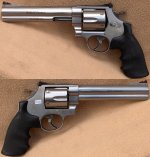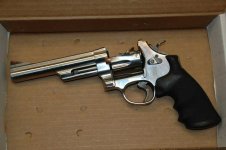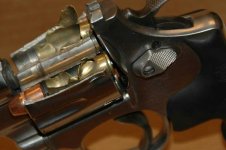MXP
Member
Hi
Where I live .44 Mag revolver is not allowed. For that reason some revolvers are converted to .44 Special so they can only chamber .44 Spl rounds. I have ordered a 629-5 Classic with 6.5 inch barrel for target shooting. I have to wait some month to get the permission. I am interested in knowing if the two cylinders have the same outer dimensions? ...I think this is needed......at least the length has to match? ...in order to have the same cylinder gab? .....what about the outer dimension? ....do you think a .44 Spl cylinder can take the same amount of pressure as a .44 Mag cylinder for this revolver?
Where I live .44 Mag revolver is not allowed. For that reason some revolvers are converted to .44 Special so they can only chamber .44 Spl rounds. I have ordered a 629-5 Classic with 6.5 inch barrel for target shooting. I have to wait some month to get the permission. I am interested in knowing if the two cylinders have the same outer dimensions? ...I think this is needed......at least the length has to match? ...in order to have the same cylinder gab? .....what about the outer dimension? ....do you think a .44 Spl cylinder can take the same amount of pressure as a .44 Mag cylinder for this revolver?






